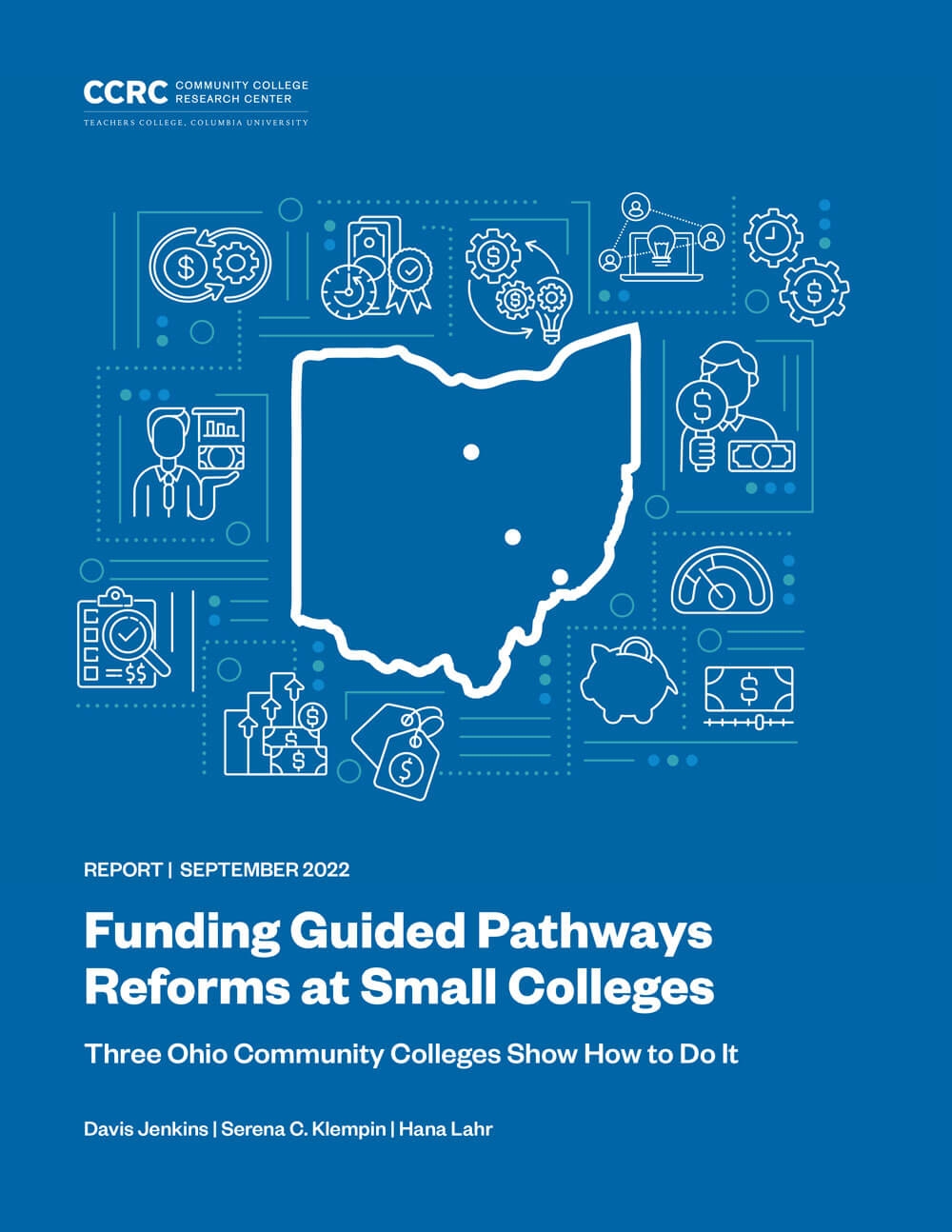
Two years ago, CCRC published a guide to help college leaders understand the costs involved in implementing guided pathways reforms. The guide was based on research at six community colleges, but only one of these was a smaller college. Small colleges lack economies of scale that can generate revenue to support investments in technology, staff training, and release time for staff to participate in reforms. And implementing guided pathways at small colleges means that many faculty and staff need to take on new roles to plan and manage the process.
This report describes how small colleges can fund and sustain guided pathways reforms. It is based on activities at three small Ohio community colleges that have made large-scale changes in practice based on the guided pathways model over the past several years. These colleges—North Central State College, Washington State Community College, and Zane State College—have successfully implemented these reforms despite challenges, including declining enrollments, decreased tuition revenue, and a reliance on performance funding.
All three colleges have made changes in practice that have enriched the experience in and out of the classroom for all students, not just targeted groups. College leaders credit these changes for improvements in rates of student progression and completion they have achieved. This report summarizes what changes in practice the colleges implemented at scale and how they are funding and sustaining these reforms. It is accompanied by case studies of each of the featured colleges, which provide more detail about their reforms, the effects of the reforms on student performance, and the strategies they used to fund their efforts.
1. North Central State College: Stabilizing Enrollment Through Strategic Realignment of Resources
Struggling with declining enrollments after the Great Recession, North Central State implemented a series of major reforms with the aim of improving retention and completion on a substantial scale. These included embedding certificates in degree programs, redesigning advisor positions as success coaches who help entering students choose a program of study, creating new division liaison positions tasked with advising students in each of the college’s three main academic areas, and recasting existing instructional design staff positions to focus on helping faculty teach online and evening classes.
2. Washington State Community College: Improving Student Retention and Success Through Organizational Efficiencies and Alignment
Since 2017, a new president and leadership team has engaged faculty and staff throughout Washington State in making substantial changes to organizational practice and culture with the goal of improving student recruitment, retention, learning, and success. These changes have been implemented in three phases: first, the college focused on strengthened advising and support for enrolled students; then it improved recruitment and onboarding of new students; in the current phase, the college is converting nearly all of its programs from 16-week terms to 8-week terms to allow students to focus on a smaller number of courses at a time and give students with work and family obligations more flexibility to adapt their schedules.
3. Zane State College: Weaving Projects and Budgets Together to Support Student Success
Zane State has used grants and general operating funds for reassigning staff roles to implement a number of large-scale reforms without significant infusions of new money. The college has placed particular emphasis on helping students enter and stay on a program path by connecting them to success coaches from the start; redesigning the first-year experience course to promote student engagement; taking a holistic approach in the provision of academic, career, and financial advising to students; and removing structural barriers in program pathways.
